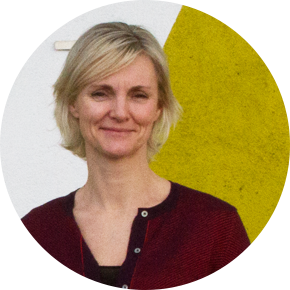Housing for the future
A look at Norwegian sustainable housing with Snøhettas Tine Hegli
Senior architect at Snøhetta and both process leader and project manager in the Powerhouse Alliance, Tine Hegli, admits that working at the vanguard of sustainability is no walk in the park. It is meticulous and not always prosperous work.
– A portion of your working hours will inevitably be hard to attribute to anything other than a knowledge account, says Tine Hegli with a smile.
ZEB Pilot House
Her work is rewarding nevertheless, as the hard-earned experience from numerous joint venture projects with cutting-edge contributors on all aspects of construction will no doubt lay a foundation of insight, paving the way for sustainable construction on a large scale in the future.
– The materials and solutions we come up with can very well be used on future projects. This way the utility of our efforts increase not only for us, but also for the business as a whole, Hegli explains.
In many ways sustainability brings the role of the architect back to its origins. The environmental, social and economical aspects of sustainability increase focus on the lifecycle perspective of our built environment. Therefore knowledge of building materials and the functionality of space and form are as essential as ever, as human necessities are weighted even more closely against the physics of nature Tine Hegli, senior architect, Snøhetta
The mind-set of sustainability
One of her projects, The Powerhouse Brattørkaia prospected in Trondheim, is Norway’s first office building creating more energy than it is using. Its distinctive south-tilted crown maximize sun-energy absorption through the 2000kWh of solar panelled roof and is characterizing of the form follow environment-mantra applied throughout the structure to optimize every ounce of energy. Use of natural light for office lighting, seawater as source for stabilizing temperature and displacement ventilation for air circulation all attribute to its energy efficiency.
– You need to work with two budgets. A commercial budget and an energy budget, both of which needs balancing, says Hegli.
To achieve this balance, Hegli and the Powerhouse Alliance found that a slightly altered work-process was necessary. Having a bigger team in the very first design phase was of vital importance for the work process. Material innovation is fundamental for an energy positive building, thus it was crucial to have access to this expertise right from the start.
– This way you eliminate the risk of grounding the project on premises that prove unproductive later in the process, the senior architect explains.
ZEB Pilot House
Design for future living
As well as projects like the strikingly ambitious urban planning venture Zero Village Bergen and the easily scalable ideas of Powerhouse Kjørbo, Tine Hegli and partners also created the ZEB Pilot House. However, this 200 m2 single-family house is not for anyone to grow up or grow old in, as the structure is intended as a demonstration residence only. The aim is to facilitate learning on building methodology for plus houses with sustainable solutions. According to Hegli, the typical myth is that plus-energy architecture implies restricted daylight and a more confined living. The Pilot House addresses this myth. The space utilisation, the recycled building components and the hydroscopic materials stabilising air humidity are all means of which architecture and technology come together in showing a promise – the much-welcomed promise that completely sustainable living can be completely exceptional to live in.
So, how do they do it? What’s the secret?
– It’s not so much about thinking different, as it is about thinking more! We need to keep more concepts simultaneously in mind.
Factsheet
Tine Hegli Tine Hegli is a Senior Architect at the internationally renowned architectural practice Snøhetta. Amongst prestigious projects she has been involved in are the Oslo Opera House, The National September 11 Memorial and Museum (Ground Zero) in New York and The King Abdulaziz Centre for World Culture.
Powerhouse Alliance A cooperative of industry partners working on creating energy positive commercial buildings, producing more energy within a period of 60 years than the energy used for operation and constructing, including all of the building materials and equipment. The goal is to show that energy positive structures are possible even at the cold latitudes of the Nordics. Powerhouse Alliancework closely with the research center on zero emission buildings ZEB, collaborating with SINTEF and hosted by NTNU faculty of Architecture and Fine Arts.
POWERHOUSE PARTNERS: ZERO, Sapa, Hydro, Asplan Viak, Entra, Skanska, Snøhetta.
ZEB – Zero Energy Buildings National research program with a wide scope of partners focusing on the development of competitive plus-energy solutions for existing and new buildings that will lead to market penetration of zero-emission buildings.
ZEB PARTNERS: BNL, Brødrene Dahl, ByBo, Caverion Norge, DiBK, DuPoint, Enova SF, Entra, Forsvarsbygg, Glava, Husbanken, Isola, Muliconsult, NorDan, Norsk Teknologi, Protan, Sapa, Skanska, Statsbygg, Sør-Trøndelag Fylkeskommune, Weber, Snøhetta.
Text: Inge Kvivik. Photography: Snøhetta


